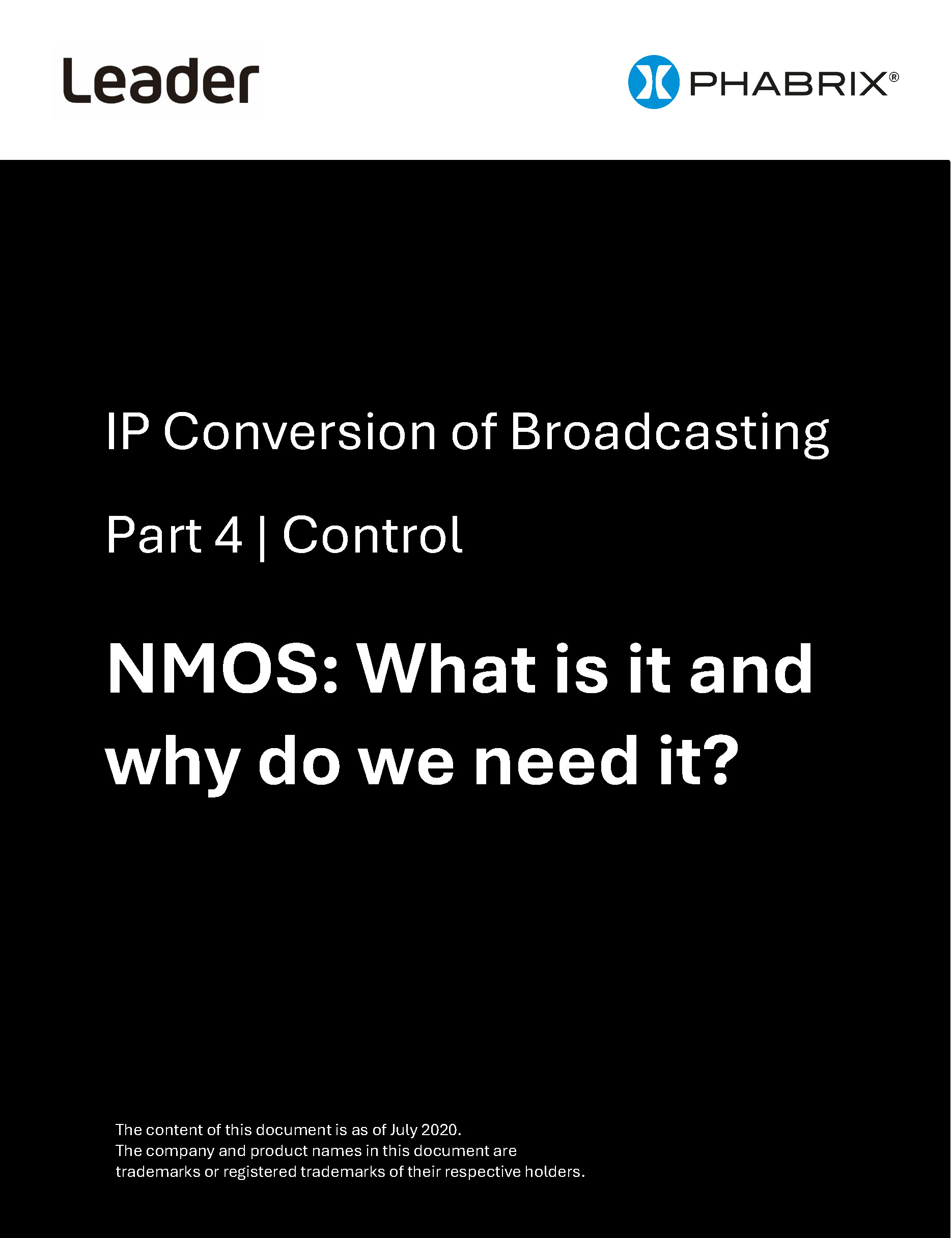Knowledge Hub
Application Notes, White Papers and Industry Articles
White Paper
NMOS: What is it and why do we need it?
Find out the basics of NMOS, why it’s useful, and how you can find, connect, and configure media devices within your audio and video networks.
Leader has created this guide to give you a greater understanding of NMOS. In the guide, you’ll find out:
- How to use NMOS to find senders and receivers on the network
- What simplistic and advanced NMOS block diagrams look like
- How to make an NMOS connection work to control devices
- The ins and outs of looking at the NMOS node server with your browser
- Useful NMOS terminology and interface specifications you can refer back to
With the widespread adoption of SMPTE ST 2110 and ST 2022-6 standards, it has been difficult to achieve useful interoperability in professional networked media environments without a way to specify the control or application planes.
To address this, the Advanced Media Workflow Association (AMWA) developed the Networked Media Open Specifications (NMOS) family of free and open specifications.
Now, rather than having to manually create and update host tables containing IP addresses and host names for complex broadcast systems, NMOS moves the industry toward a fully-networked architecture, where the specifications provide for the management of video, audio, and data streams through specifying how to discover, control, and connect to network elements, send tally information, control audio channels, and much more.

White Paper
How to ensure your Blackburst survives the Introduction of PTP
We have all grown up with Blackburst reference in our facilities and the only change we might have had to manage is the introduction of tri-level sync when facilities started migrating to HD.
The expansion of Blackburst tri-level sync reference systems was relatively simple. Either daisy chain the new device with the loop-through genlock output from an existing device or use a distribution amplifier to split the Blackburst /tri-level sync reference signal. What could be simpler?
Broadcasters are now faced with a new reference: Precision Time Protocol or PTP as we call it. Fortunately, this reference is already being used in other industries like finance, power utilities, telecommunications, and has standards associated with it.
Every industry sector claims to be unique, and the broadcast business is no exception. However, for PTP the broadcast industry is very much unique. The standards authorities have created a broadcast specific profile for PTP and understanding how that profile is applied to the broadcast industry will ensure that your existing SDI infrastructure can integrate with your new video over IP infrastructure without QoS issues being introduced.
In this paper we will discuss the new challenges broadcasters are facing and highlight some of the pitfall that can easily be avoided.
